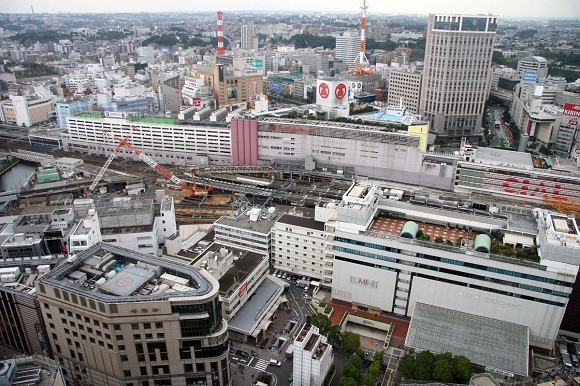
Tokyo’s much-ballyhooed Kichijoji only makes it to number-three, while an outsider with easy access to Tokyo takes the top spot.
While Tokyo is the biggest city in all of Japan, from street-level it often feels like several different towns mashed together. Neighborhoods just a train stop away from each other can have very different atmospheres, and choosing a community that offers a vibe you enjoy, as well as a manageable commute to work or school, can really affect your quality of life.
Suumo, one of Japan’s largest real estate agencies, recently polled 7,000 people living in Tokyo or the nearby prefectures of Kanagawa, Chiba, Saitama, and Ibaraki, asking them which neighborhood in Kanto (east Japan) they want to live in (specifically which train station they’d like to live close to). Let’s take a look at the top eight responses:
8. Meguro
Meguro has a lot going for it. As a stop on the Yamanote loop rail line that circles downtown Tokyo, it’s hard to get much more centrally located. At the same time, Meguro exists in one of the remaining quiet spots on the Yamanote, with far fewer towering high-rises and drunken revelers than other stops. It’s also a connecting station for the Tokyu train and Meguro and Namboku subway lines, providing quick access both deeper into downtown and out towards the suburbs.
7. Shinjuku
Yes, Shinjuku (another Yamanote stop) is the busiest station in all of Japan, but for good reason. In addition to ample office space, the neighborhood offers as much entertainment variety as you’ll find anywhere in Japan, with block after block of shopping, dining, and carousing opportunities. Other perks include being able to see some of the country’s most creative advertising (like the giant exhibition of anime eye artwork currently gracing the station’s walls), and also the chance to rub shoulders with the SoraNews24 staff as we make our way too and from our nearby headquarters.
6. Musashi Kosugi
Few neighborhoods have gone through a more dramatic transformation in recent years than Musako, as the locals call it. Not long ago, the area outside the east side of this station in Kawasaki, Tokyo’s southern neighbor, was all factories, but they’ve been replaced with sparkling new condominiums and multiple entertainment complexes. Kawasaki’s blue-collar image means rent here is often less expensive than in Tokyo, even though Tokyo’s iconic Shibuya Station is only about 15 minutes away by direct train, and you’ll also be able to brag to your friends that our neighborhood was attacked by the King of the Monsters himself in Shin Godzilla.
5. Ikebukuro
Located along the northwest stretch of the Yamanote, Ikebukuro has long existed in the shadow of the trendier Shinjuku and Shibuya. Gradually, though, it’s earned a reputation as a fun slice of downtown, with multiple movie theaters, an aquarium, 60th-floor observation deck, and the venues of several cool anime fan events, such as the Ranma 1/2 Cafe we recently visited. The west side of the station has also become a sort of de facto Chinatown, with gourmands saying it features some of Tokyo’s most authentic Chinese restaurants.
4. Shinagawa
Yet another Yamanote station, Shinagawa has a buttoned-down image, with much of its daytime population made up of white-collar workers who stream into the offices of major corporations like Sony. But unlike many other salaryman-centric towns, Shinagawa isn’t covered with drunks griping about work after they punch out, as many head elsewhere to drown their sorrows. The high-speed Shinkansen also stops at Shinagawa, making it a great place for travel lovers to live, as is the fact that it’s connected directly by train with Haneda Airport.
3. Kichijoji
Just about every time Kichijoji comes up in conversation, someone will mention how it’s “the number-one neighborhood Tokyoites want to live in!” The district frequently tops such polls thanks to having a cosmopolitan image (delicious independent restaurants are clustered around the station) while lying outside the hustle and bustle of central Tokyo, since the station sits about 15 minutes by train west of Shinjuku. Other nearby attractions include Inokashira Park, one of Tokyo’s best cherry blossom viewing spots, and the Ghibli museum.
2. Ebisu
Our last visit to the Yamanote Line comes with Ebisu, which is nestled between the too-quiet-for-some-people’s-tastes Meguro and too-noisy-for-other-people’s-tastes Shibuya. Ebisu is often described as “a town for adults,” and it definitely exudes an air of refinement and class, even when you’re tipping back a cold brew at the Ebisu Beer Museum.
1. Yokohama
Sitting at the top of Suumo’s chart is Yokohama, which is two cities to the south of Tokyo but only about 30 minutes from downtown Tokyo by train. In another dichotomy, despite being the second-largest city (population-wise) in Japan, Yokohama has a reputation as a relaxed, coastal town caressed by coastal winds blowing in from its expansive port.
The area immediately surrounding Yokohama Station is packed with dining and shopping options, but day-trippers to the town might argue that it lacks the charm of the city’s Minato Mirai harbor district. It’s also worth pointing out that the decidedly urban-feeling Yokohama Station got heavy support from survey participants currently living in Kanagawa Prefecture (of which Yokohama is the capital), who gave it 52.4 percent of its votes, no doubt in part because it’s large enough to provide many work and leisure options, but also closer to Tokyo than Minato Mirai Station for those who are commuting into Tokyo daily. And on days off, or even after work, Minato Mirai is less than 10 minutes away by train, meaning that it’s close enough to go see the annual Pikachu parades that are held every summer as often as you want.
Source: Suumo
Top image: Wikipedia/Halfd
Insert images: Pakutaso (1, 2), Wikipedia/ペン太, Wikipedia/Stevec240, Pakutaso (3), SoraNews24, Pakutaso (4, 5)
[ Read in Japanese ]
Follow Casey on Twitter, where he likes his friend’s description of Kanagawa as “the California of Japan.”
[ Read in Japanese ]

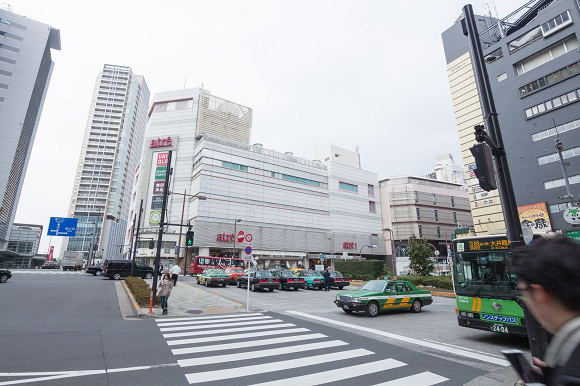
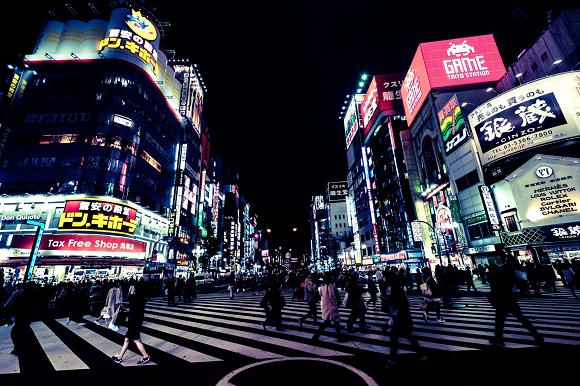
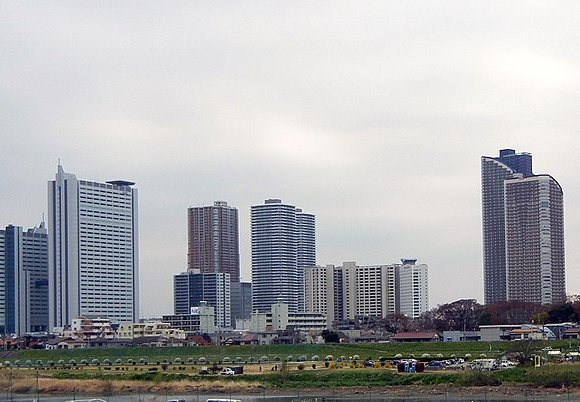
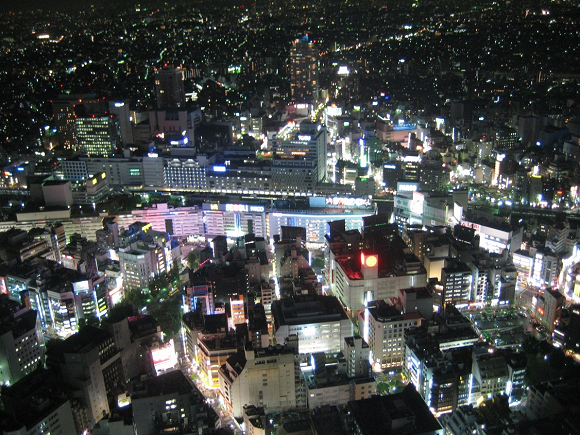
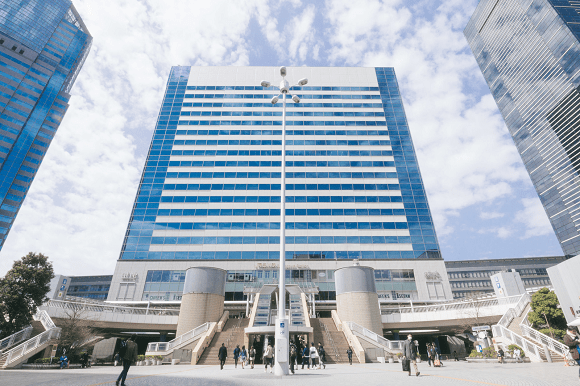
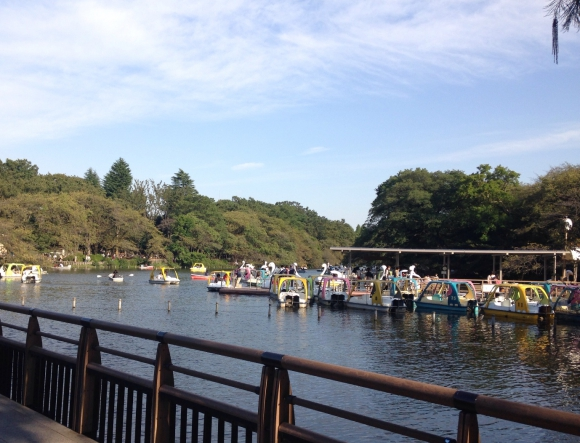
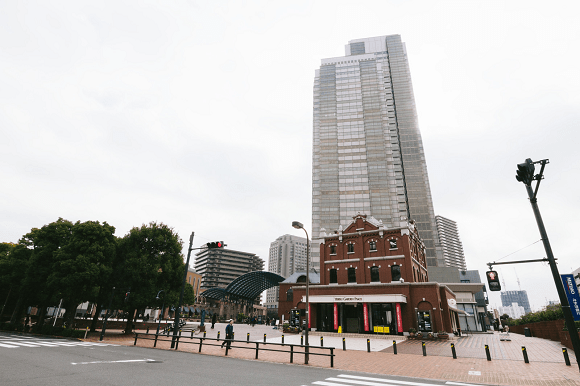
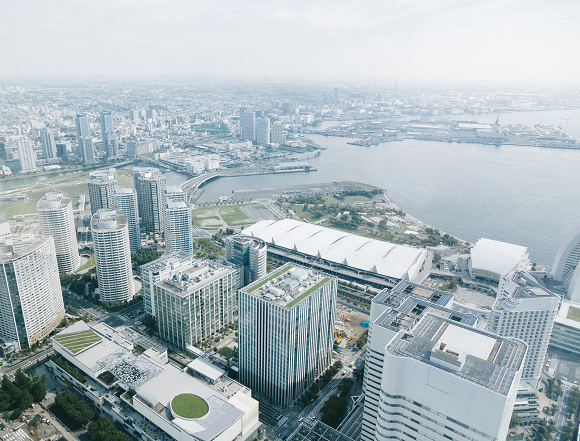
 What’s the best part of Tokyo to live in, and why? Survey gives the top six picks
What’s the best part of Tokyo to live in, and why? Survey gives the top six picks The 10 best places for young, single people to live in and around Tokyo【Survey】
The 10 best places for young, single people to live in and around Tokyo【Survey】 Yokohama ranks as most desirable city for living in Kanto for the second year in a row
Yokohama ranks as most desirable city for living in Kanto for the second year in a row Want to choose the name of Tokyo’s most important new station? Here’s your chance!
Want to choose the name of Tokyo’s most important new station? Here’s your chance! End-of-the-line exploring in Japan: Visiting Hashimoto Station
End-of-the-line exploring in Japan: Visiting Hashimoto Station Red light district sushi restaurant in Tokyo shows us just how wrong we were about it
Red light district sushi restaurant in Tokyo shows us just how wrong we were about it Sandwiches fit for a sumo served up in Osaka【Taste Test】
Sandwiches fit for a sumo served up in Osaka【Taste Test】 Japanese ramen restaurants under pressure from new yen banknotes
Japanese ramen restaurants under pressure from new yen banknotes Tokyo Tsukiji fish market site to be redeveloped with 50,000-seat stadium, hotel, shopping center
Tokyo Tsukiji fish market site to be redeveloped with 50,000-seat stadium, hotel, shopping center Starbucks Japan adds a Motto Frappuccino to the menu for a limited time
Starbucks Japan adds a Motto Frappuccino to the menu for a limited time McDonald’s new Happy Meals offer up cute and practical Sanrio lifestyle goods
McDonald’s new Happy Meals offer up cute and practical Sanrio lifestyle goods French Fries Bread in Tokyo’s Shibuya becomes a hit on social media
French Fries Bread in Tokyo’s Shibuya becomes a hit on social media Pokémon Sleep camping suite and guestrooms coming to Tokyo Hyatt along with giant Snorlax burgers
Pokémon Sleep camping suite and guestrooms coming to Tokyo Hyatt along with giant Snorlax burgers Beautiful Red and Blue Star luxury trains set to be Japan’s new Hokkaido travel stars
Beautiful Red and Blue Star luxury trains set to be Japan’s new Hokkaido travel stars Anime girl English teacher Ellen-sensei becomes VTuber/VVTUber and NFT
Anime girl English teacher Ellen-sensei becomes VTuber/VVTUber and NFT All-you-can-drink Starbucks and amazing views part of Tokyo’s new 170 meter-high sky lounge
All-you-can-drink Starbucks and amazing views part of Tokyo’s new 170 meter-high sky lounge More foreign tourists than ever before in history visited Japan last month
More foreign tourists than ever before in history visited Japan last month Studio Ghibli releases new action figures featuring Nausicaä of the Valley of the Wind characters
Studio Ghibli releases new action figures featuring Nausicaä of the Valley of the Wind characters New private rooms on Tokaido Shinkansen change the way we travel from Tokyo to Kyoto
New private rooms on Tokaido Shinkansen change the way we travel from Tokyo to Kyoto Starbucks reopens at Shibuya Scramble Crossing with new look and design concept
Starbucks reopens at Shibuya Scramble Crossing with new look and design concept Studio Ghibli glasses cases let anime characters keep an eye on your spectacles
Studio Ghibli glasses cases let anime characters keep an eye on your spectacles Beautiful Ghibli sealing wax kits let you create accessories and elegant letter decorations【Pics】
Beautiful Ghibli sealing wax kits let you create accessories and elegant letter decorations【Pics】 Studio Ghibli releases Kiki’s Delivery Service chocolate cake pouches in Japan
Studio Ghibli releases Kiki’s Delivery Service chocolate cake pouches in Japan New definition of “Japanese whiskey” goes into effect to prevent fakes from fooling overseas buyers
New definition of “Japanese whiskey” goes into effect to prevent fakes from fooling overseas buyers Our Japanese reporter visits Costco in the U.S., finds super American and very Japanese things
Our Japanese reporter visits Costco in the U.S., finds super American and very Japanese things Studio Ghibli unveils Mother’s Day gift set that captures the love in My Neighbour Totoro
Studio Ghibli unveils Mother’s Day gift set that captures the love in My Neighbour Totoro New Japanese KitKat flavour stars Sanrio characters, including Hello Kitty
New Japanese KitKat flavour stars Sanrio characters, including Hello Kitty New Pokémon cakes let you eat your way through Pikachu and all the Eevee evolutions
New Pokémon cakes let you eat your way through Pikachu and all the Eevee evolutions Disney princesses get official manga makeovers for Manga Princess Cafe opening in Tokyo
Disney princesses get official manga makeovers for Manga Princess Cafe opening in Tokyo Sales of Japan’s most convenient train ticket/shopping payment cards suspended indefinitely
Sales of Japan’s most convenient train ticket/shopping payment cards suspended indefinitely Sold-out Studio Ghibli desktop humidifiers are back so Totoro can help you through the dry season
Sold-out Studio Ghibli desktop humidifiers are back so Totoro can help you through the dry season Japanese government to make first change to romanization spelling rules since the 1950s
Japanese government to make first change to romanization spelling rules since the 1950s Ghibli founders Toshio Suzuki and Hayao Miyazaki contribute to Japanese whisky Totoro label design
Ghibli founders Toshio Suzuki and Hayao Miyazaki contribute to Japanese whisky Totoro label design Doraemon found buried at sea as scene from 1993 anime becomes real life【Photos】
Doraemon found buried at sea as scene from 1993 anime becomes real life【Photos】 Tokyo’s most famous Starbucks is closed
Tokyo’s most famous Starbucks is closed One Piece characters’ nationalities revealed, but fans have mixed opinions
One Piece characters’ nationalities revealed, but fans have mixed opinions We asked a Uniqlo employee what four things we should buy and their suggestions didn’t disappoint
We asked a Uniqlo employee what four things we should buy and their suggestions didn’t disappoint Princesses, fruits, and blacksmiths: Study reveals the 30 most unusual family names in Japan
Princesses, fruits, and blacksmiths: Study reveals the 30 most unusual family names in Japan What should Tokyo’s newest rail station be called? Poll asks high school girls for their opinion
What should Tokyo’s newest rail station be called? Poll asks high school girls for their opinion Moving to Tokyo? Here are the three best, most reasonable neighborhoods to live in
Moving to Tokyo? Here are the three best, most reasonable neighborhoods to live in How much money do you need for a studio apartment in downtown Tokyo?
How much money do you need for a studio apartment in downtown Tokyo? These are the 11 most crowded trains in Japan…and surprise! They’re all in the Tokyo area
These are the 11 most crowded trains in Japan…and surprise! They’re all in the Tokyo area Why are people in their 20s moving outside of Tokyo to Yokohama and other areas?
Why are people in their 20s moving outside of Tokyo to Yokohama and other areas? Awesome videos show Final Fantasy theme music sending trains on the their way at Japanese station
Awesome videos show Final Fantasy theme music sending trains on the their way at Japanese station 11 cheapest Tokyo neighborhoods to rent an apartment in show living here’s not an impossible dream
11 cheapest Tokyo neighborhoods to rent an apartment in show living here’s not an impossible dream Woman decides to go for a walk on the busiest train tracks at Shibuya Station【Video】
Woman decides to go for a walk on the busiest train tracks at Shibuya Station【Video】 Tokyo travel alert: City’s most important train line shutting down for construction this weekend
Tokyo travel alert: City’s most important train line shutting down for construction this weekend Downtown Tokyo set to open its most important train station in 50 years, and now it has a name
Downtown Tokyo set to open its most important train station in 50 years, and now it has a name Gigantic real-life Dragon Quest video game slime to appear in Japan this Christmas
Gigantic real-life Dragon Quest video game slime to appear in Japan this Christmas Moving to Tokyo? Real estate agent picks five best neighborhoods for single residents
Moving to Tokyo? Real estate agent picks five best neighborhoods for single residents Japan’s real-world Pikachu Outbreak 2019 dates announced, so make your travel plans now!
Japan’s real-world Pikachu Outbreak 2019 dates announced, so make your travel plans now! Adorable Pikachu popsicle treats and tapioca bubble tea are coming to Japan this summer!
Adorable Pikachu popsicle treats and tapioca bubble tea are coming to Japan this summer! The full Pikachu Outbreak 2019 Pikachu/Eevee show and parade schedule is here!
The full Pikachu Outbreak 2019 Pikachu/Eevee show and parade schedule is here!
Leave a Reply